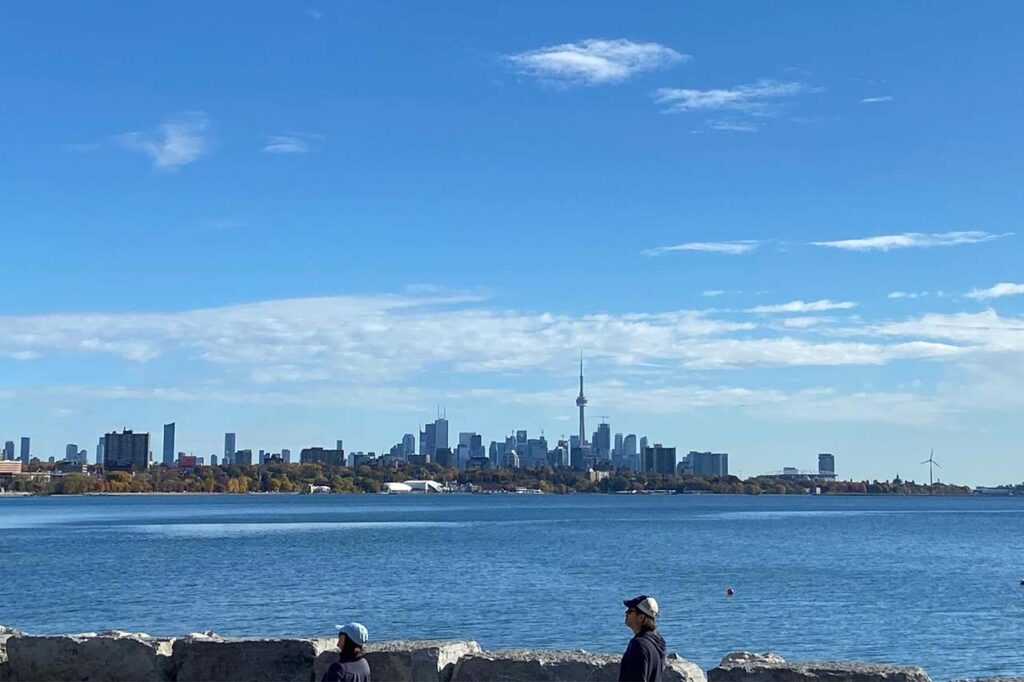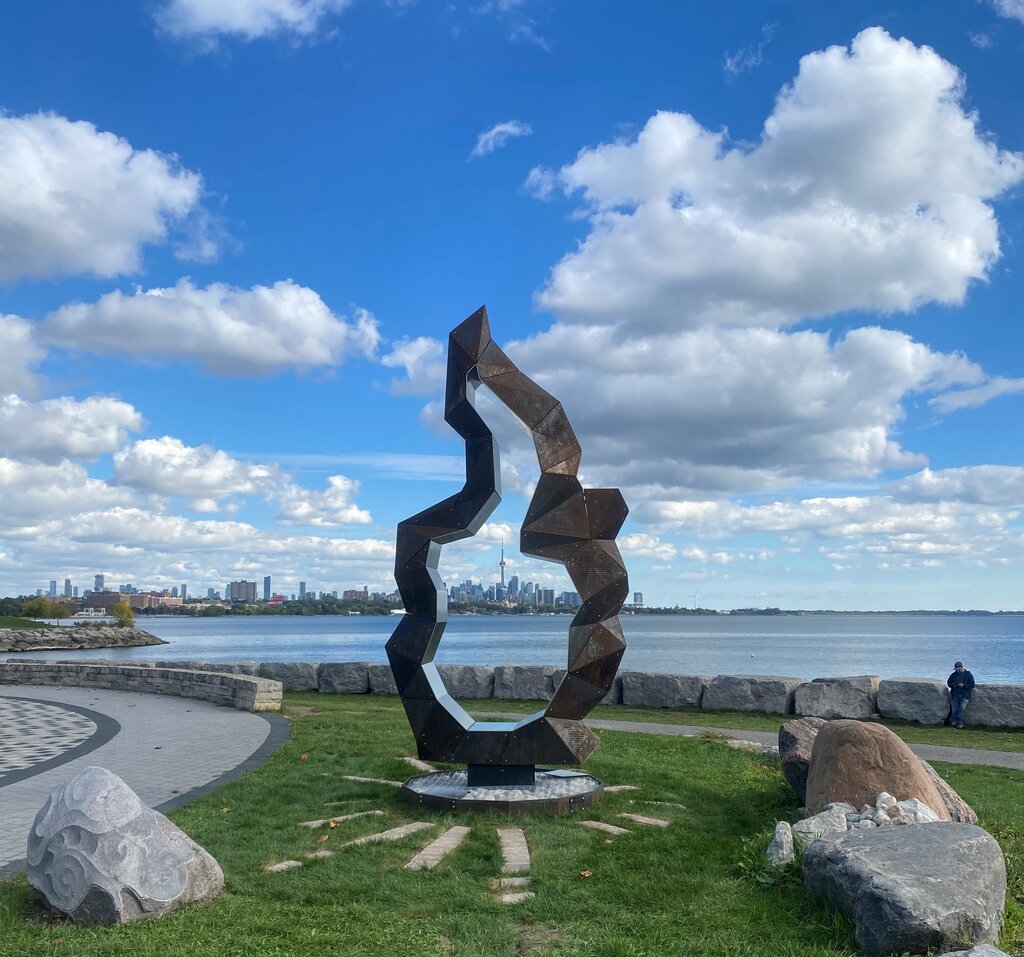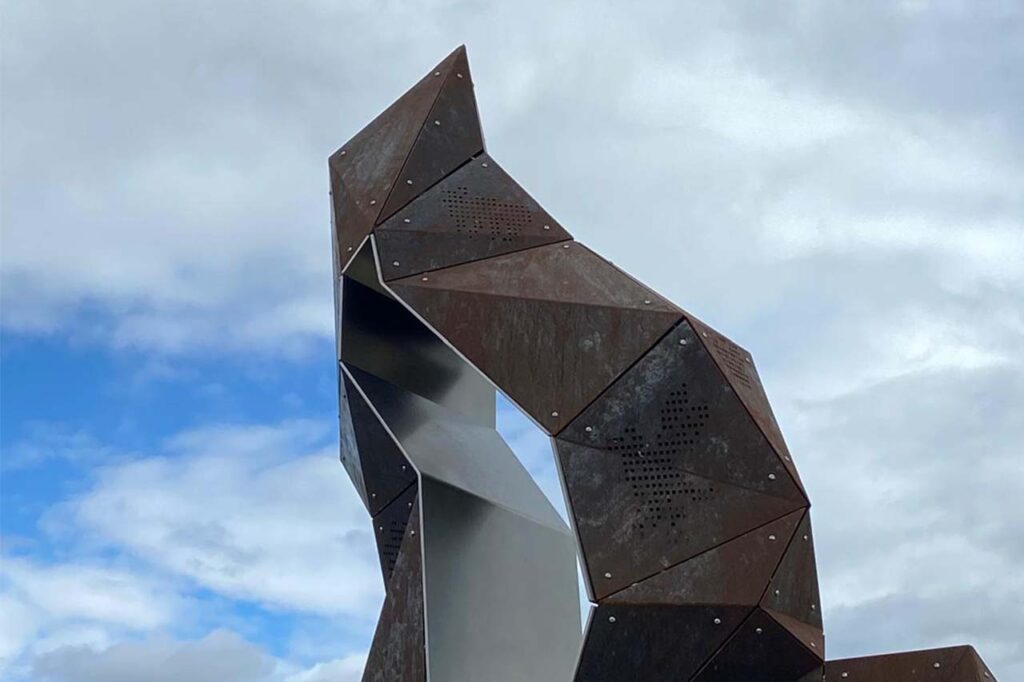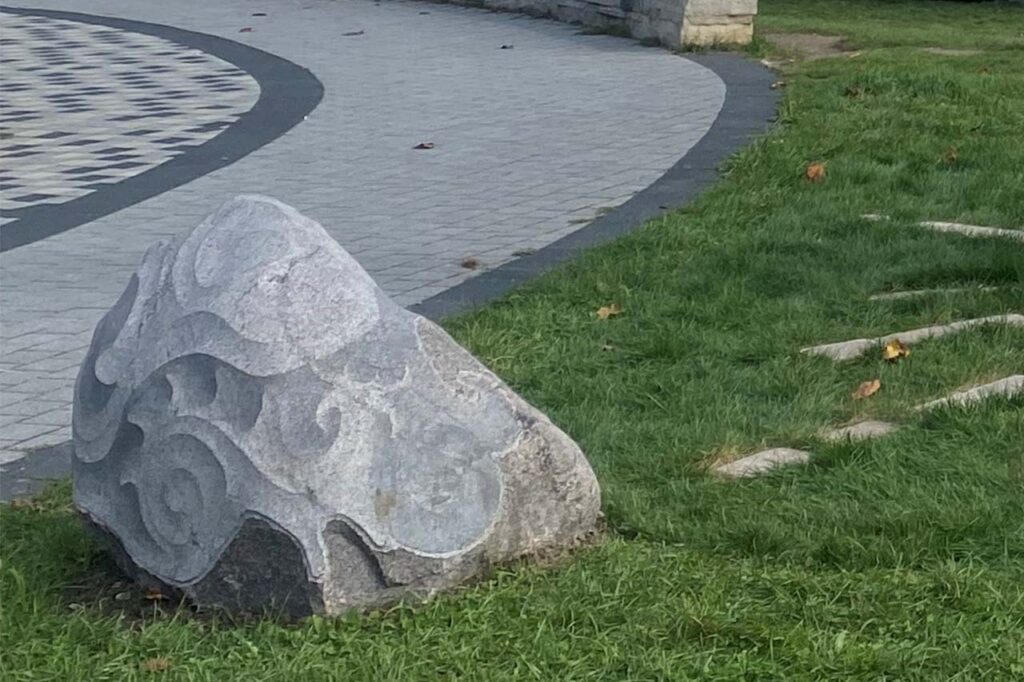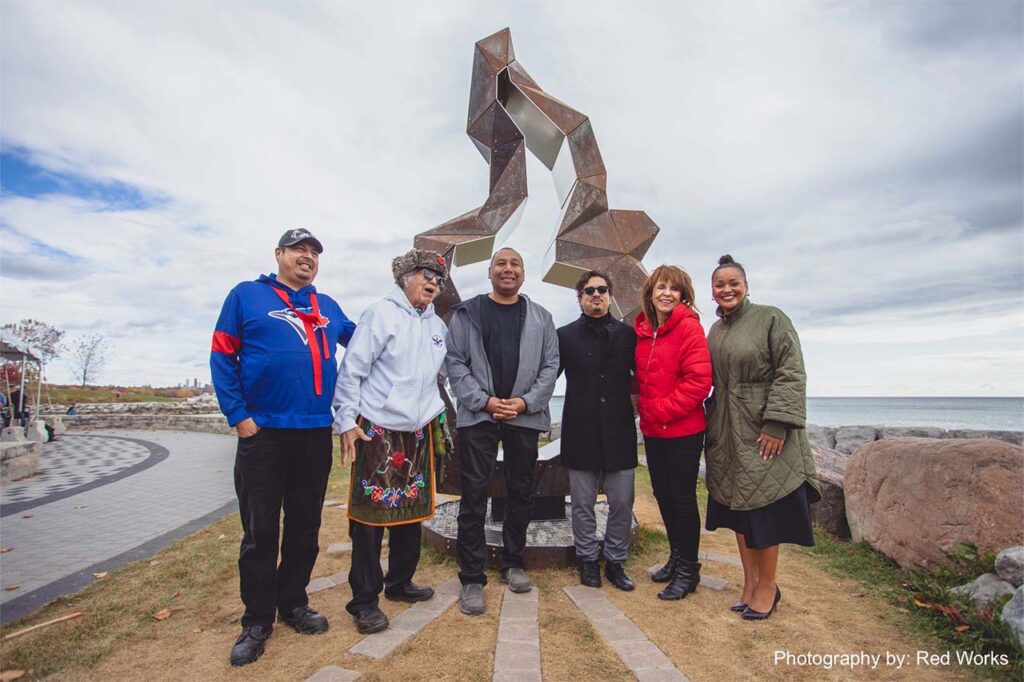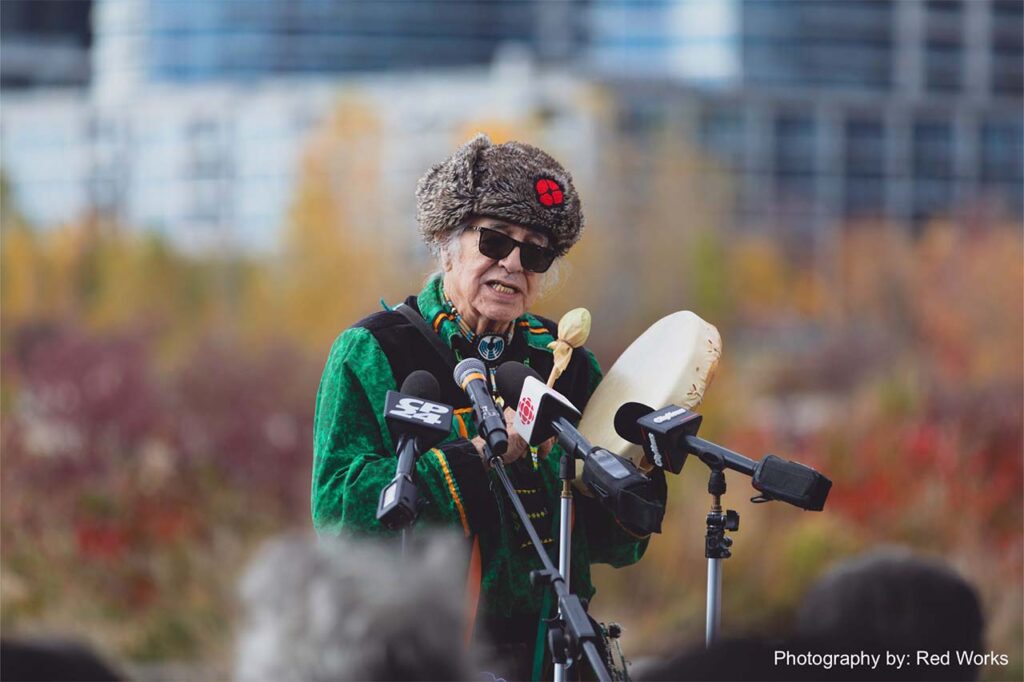Last Saturday (October 26th), on a crisp fall morning, the City of Toronto welcomed a new piece to its growing collection of public art. At the edge of Humber Bay, amidst the cool coastal breeze, it was the perfect day to gather around a campfire.
Humber Bay on Saturday, October 26th, 2024
Campfire is a new landmark sculpture by Michael Belmore and Herman Mejia. This collaboration between Belmore (an Anishinaabe artist) and Mejia (who was trained in landscape architecture) exemplifies the capacity of art to transform the built environment. As Campfire frames the city skyline within its silhouette, the liminal threshold between land and water becomes a place to linger and feel part of something bigger. Echoing a practice that many Indigenous communities have used for decades, the campfire at the water’s edge serves as a means of navigation and place-keeping, honoring the Mississaugas of the Credit First Nation’s ties to the land. “We found the right piece for the right place,” declares Belmore.
Michael Belmore and Herman Mejia, Campfire, stainless steel, 12 foot tall
Featuring animal drawings from children from the Jean Augustine Centre in its perforations, as well as a Story Rock handcrafted by Michael Belmore, Campfire is a space for storytelling – a theme that often stimulates Belmore’s work. This piece, he hopes, commemorates an “opportunity to be able to stay and sit in that place;” in those moments “where we sit around the campfire and tell stories and get lost in [them].”
Close-up of perforations on Campfire
Story Rock
A symbolic hearth truly kindled by the warmth of community, Campfire brought together Indigenous leaders, city council members, artists, and community members alike for its unveiling.
(L-R) Jeff Debosh, Garry Sault, Michael Belmore, Herman Mejia, Claire Sault, and Deputy Mayor Amber Morley at the Campfire Ribbon-cutting.
Garry Sault, Ojibwe elder and knowledge-holder from the Mississaugas of the Credit, opened the ceremony with a steadfast song and drumbeat. “The doorway is open and the fire is lit,” he calls out, “the doorway is open, the doorway to understanding.”
Ojibwe Elder Garry Sault
Fire, according to MCFN chief Claure Sault, is a sacred element; “a doorway that opens into the spiritual realm.” In many Indigenous cultures, Sacred Fire is used for spiritual gatherings, including celebration and prayer. Steel-clad and twelve-feet-tall, this fire – Campfire – is permanent. Not just a large monument, but a lasting place to gather. Fire-keeper Jeff Debosh, who has sometimes had to keep fire for three days, remarks that he is amazed to see the permanency of this art statement.
Firekeeper Jeff Debosh of the Mississaugas of the Credit First Nation
Campfire exhibits the enduring mark of Indigenous voices. Now a permanent fixture on the lakeshore, it also signals the ability of public art to alchemize and immortalize these stories.
Athen Go
Images are courtesy of Red Works Photography.
Event information: CAMPFIRE, a new permanent public artwork by Michael Belmore and Herman Mejia, is an Indigenous-led project that stands as a new landmark and gathering place on the waterfront. Palace Pier (near 1 Palace Pier Court, Etobicoke ON), Saturday, October 26, 2024, Ribbon Cutting: 11 am.

